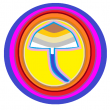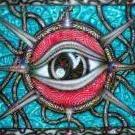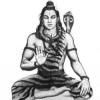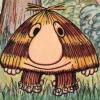Leaderboard
Popular Content
Showing content with the highest reputation on 12/08/20 in all areas
-
3 pointsTo be fair, Sallubrious came in with all guns blazing, and quite a hostile aggressive tone, calling anyone who doesn't subscribe to his point of view a lot of names. That's not usually a very good way to start a discussion, unless you're looking for similarly defensive responses. We are not your enemies. As far as this all being one big coordinated scheme to usher in draconian measures, I would ask one question. Have you ever been involved in project management before? Have you experienced how fucking difficult it is to get anyone to agree on anything? Let alone actually make it happen? I am sorry to hear your situation is so dire Sallubrious. I wish there was more support for families who are hurting right now. Let us know if there is a go fund me or something that people can contribute to to assist.
-
2 pointsFigured I would try to get a list going for Lophophora research, inspired by The Cactus Inspiration Institute and Gimli’s Complete List of Trichocereus Clones. I’ve started it off by lifting and giving the CCI research list a clean up, lifting Snu's reference list and organising publications by year, If you know of any Lophophora research that is not included in the list, leave a comment or send me a message and I will add it to the list. At some point soon I’ll go through the reference list of Ratsch’s encyclopaedia and whatever I find on Erowid and forums. If you beat me to it feel free… N.D. Dana M. Price and Martin Terry. N.D. Problem or Opportunity? Impact of the Peyote (Lophophora williamsii) Trade on Endangered Star Cactus (Astrophytum asterias). Webpage. Cactus Conservation Institute. Muller-Ebeling, Claudia, and Christian Ratschs. n. d. Kreistrituale mit Peyote und MDMA. In MDMA: Die psychoactive Substanz fur Therapie, Ritual und Rekreation, rev. ed., ed. Constanze Weigle and Ronald Rippchen. Der Grune Zweig 103. Lohrbach: Werner Pieper’s MedienXperimente. 1872 Ellis, Havelock. 1872. A note on the phenomenon of mescal intoxication. The Lancet 75(1):1540-42. 1888 Hennings, Paul. 1888. Eine giftige Kaktee, Arhalonium lewinii n. spp.. Gartenflora 37:410-12. Lewin, Louis. 1888. Ueber Anhalonium lewinii. Archiv fur experimentelle Pathologie und Pharmakologie 24:401-11. 1902 Lumholz, Carl. 1902. Unknown Mexico. 2 vols. New York: Charles Scribner’s Sons. 1925 Shonle, R. 1925. Peyote, the giver of visions. American Anthropologist 27:53-75 1927 Rouhier, Alexandre. 1927. Le Peyotl (Echinocactus williamsii). Paris: Gaston Doin et Cie. 1928 Zabel, Rudolf. 1928. Das heimliche Volk. Berlin: Deutsche Buch-Gemeinschaft. 1932 Wagner, Gunter. 1932. Entwicklung und Verbreitung des Peyote-Kultes. Baessler-Archiv 15:59-144. 1934 Petrullo, V. 1934. The diabolic root: A study of peyotism, the new Indian religion, among the Delawares. Philadelphia: University of Pennsylvania Press. 1935 Lasswell, H. 1935. Collective autism as a consequence of cultural contact: Notes on religious training and the peyote cult at Taos. Zeitschrift fur Sozialforschung 4:232-47. Paris. 1936 Schultes, R. E. 1936. Peyote and plants used in the peyote ceremony. Botanical Museum Leaflets Harvard Univ. 4:129- 152. 1937 Hijaro, L. 1937. Viajes por America, 3 parte, El peyote al traves de los siglos. Revista Mexicana de Ingeneria y Arquitectura 15:543-63, 665-92Bravo, H. 1937. Las Cactaceas de Mexico. Universidad Nacional de Mexico. Schultes, R.E. 1937. “Peyote (Lophophora williamsii) and plants confused with it.” Harv. Bot. Mus. Leaf. 5(5):61-88. Schultes, R. E. 1937. Peyote and the American Indian. Nature Magazine 30: 155–157. 1938 Schultes, R. E. 1938. The appeal of peyote (Lophophora Williamsii)as a medicine. American Anthropologist 40:698–715. Schultes, R. E. 1938. Peyote, an American Indian heritage from Mexico. El. Mex. Ant. 4:199–208. Goggin, John M. 1938. A note on Cheyenne peyote. New Mexico Anthropologist 3(2):26-32. La Barre, Weston. 1938. The peyote cult. Schocken Books. Opler, Morris E. 1938. The use of peyote by the Carrizo and Lipan Apache tribes. American Anthropologist, n. s., 40:271-85. 1939 Carlson G. and Jones, V. 1939. Some notes on uses of plants by the Comanche Indians. Papers of the Michigani Academy of Science, Arts, and Letters 25:517-42. Opler, M. 1939. A description of a Tonkawa peyote meeting held in 1902. American Anthropologist 41:433-39. Stewart, O. 1939. Washo-Northern Paiute peyotism: A study in acculturation. Proceedings of the 6th Pacific Science Congress 4:65-68 La Barre, W. 1939. Note on Richard Schultes' "The Appeal of Peyote." American Anthropologist 41:340-42 Gusinde, Martin. 1939. Der Peyote-Kult: Enstehung und Verbeitung. Vienna-Modling: Missionsdruckerei. 1940 Schultes, R. E. 1940. The aboriginal therapeutic uses of Lophophora Williamsii. Cactus and Succulent Journal 12:177–181. Hayes, A. 1940. Peyote cult on the Goshiute reservation at Deep Creek, Utah. New Mexico Anthropologist 4:34-36. Opler, M. 1940. The character and history of the southern Ute peyote rite. American Anthropologist 57:463-78. Hayes, Alden. 1940. Peyote cult on the Goshiute Reservation at Deep Creek, Utah. New Mexico Anthropologist 4(2): 34-36. Opler, Marvin Kaufman. 1940. The character and history of the southern Ute peyote rite. American Anthropologist, n. s., 42:463-78. 1941 Baarber, B. 1941. A socio-cultural interpretation of the peyote cult. American Anthropologist 43:673-75. Siskin, E. 1941. The impact of the peyote cult upon shamanism among the Washo Indians. Unpublished Ph.D. dissertation, Yale University (Department of Anthropology), New Haven. Stewart, O. 1941. The Southern Ute peyote cult. American Anthropologist 43:303-308. 1942 Malouf, C. 1942. Gosiute peyotism. American Anthropologist 44:93-103. Bromberg W. 1942. Storm over peyote. Nature Magazine 35:410-12. Opler, M. 1942. Fact and fancy in Ute peyotism. American Anthropologist 44:151-59. Leonard, Irving A. 1942. Peyote and the Mexican Inquisition, 1620. American Anthropologist, N.s., 44:324-26. 1944 Stewart, O. 1944. Washo-Northern Paiute peyotism: A study in acculturation. University of California Publications in Ameri- can Archaeology and Ethnology 40, No. 3:63-141. 1947 La Barre, W. 1947. Primitive psychotherapy in native American cultures: Peyotism and confession. Journal of Abnormal and Social Psychology 24:294-309. 1948 Stewart, O. 1948. Ute peyotism. University of Colorado Studies, Series in Anthropology 1:1-42 1949 McAllester, D. 1949. Peyote music. Viking Fund Publications in Anthropology No. 13. 1950 Brant, C. 1950. Peyotism among the Kiowa-Apache and neighboring tribes. Southwestern Journal of Anthropology 6:212-22. 1951 La Barre, W. McAllester, D. Slotkin, J. Stewart, O. and Tax, S. 1951. Statement on peyote. Science 114:582-83. Slotkin, J. 1951. Early eighteenth century documents on peyotism north of the Rio Grande. American Anthropologist 53:420-27 1952 Splinder, G. 1952. Personality and peyotism in Menomini Indian acculturation. Psychiatry 15:151-59. Gonzalo, A. 1952. La magica del peyotl. Universidad de Mexico, Organo Oficial de la Universidad Nacional Autonoma de Mexico 6, No. 68:2-4 Slotkin, J. 1952. Menomini Peyotism. Transactions of the American Philosophical Society. Beaver, W. 1952. Peyote and the Hopi. American Anthropologist 54:120. 1953 Nettl, B. 1953. Observations on meaningless peyote song texts. Journal of American Folklore 66:161-64. 1955 Slotkin, J. 1955. Peyotism, 1521-1891. American Anthropologist 57:202-30. 1956 Slotkin, J. 1956. The peyote way. Tomorrow, Quarterly Review of Psychical Research 4:64-70. Arth, M. 1956. A functional view of peyotism in Omaha culture. The Plains Anthropologist 7:25-29. Stewart, O. 1956. Peyote and Colorado's Inquisition law. Colorado Quarterly 5:79- 90 Slotkin, J. S. 1956. The peyote religion: A study in Indian-White relations. Glencoe, III.: The Free Press. 1957 Howard, J. 1957. The mescal bean cult of the central and southern Plains: An ancestor of the peyote cult? American Anthropologist 59:75-87. Aberle, D. and Stewart, O. 1957. Navaho and Ute peyotism: A chronological and distributional study. University of Colorado Studies, Series in Anthropology, No. 6. 129 La Barre, W. 1957. Mescalism and peyotism. American Anthropologist 59:70 Denman, L. (Ed.) 1957. The peyote ritual. San Francisco: Grabhorn Press. Dittman, A. and Moore, H. 1957. Disturbance in dreams as related to peyotism among the Navaho. American Anthropologist 59:642-49. Merriam, A. and D’Azevedo, W. 1957. Washo peyote songs. American Anthropologist 59:615-41 1958 Kloesel, L.G. 1958. “Some notes on peyote.” American J. Pharmacy 130:307-316. Rhodes, W. 1958. A study of musical diffusion based on the wandering of the opening peyote song. Journal of the International Folk Music Council 10:42-49. 1959 Barber, C. 1959. Peyote and the definition of narcotic. American Anthropologist 61:641-46. Vonnegut, Kurt. 1959. The sirens of Titan. New York: Dell. 1960 La Barre, W. (1960) Twenty Years of Peyote Studies. Current Anthropology, 1(1): 45-60 McLeary, James A., Paul S. Sypherd, and David L. Walkington. 1960. Antiobiotic activity of an extract of peyote [Lophophora wiliamsii (Lemaire) Coulter]. Economic Botany 14:247-49. 1962 Dustin, C. Burton. 1962. Peyotism and New Mexico. Albuquerque, N.M.: self-published. 1963 Wasson, R.G. 1963. “Notes on the present status of ololiuhqui and the other hallucinogens of Mexico.” Harv. Bot. Mus. Leaf. 20(6):161-193. Mellen, Chase, III. 1963. Reflections of a peyote eater. The Harvard Review 1(4): 63-67. 1964 James, Joyce. 1964. Shouted from the housetops: A peyote awakening. Psychedelic Review 1(4): 459-83. 1965 Furst, Peter T. 1965. West Mexican tomb art as evidence for shamanism in pre-Hispanic Mesoamerica. Antropologica 15:29-80. Gabler, Hartwig. 1965. Aus dem Heilschatz der Natur, Stuttgart: Paracelsus Verlag. 1966 McLaughlin, J.L. & Paul, A.G. 1966. “The cactus alkaloids. I. Identification of N-methylated tyramine derivatives in Lophophora williamsii.” Lloydia 29(4):315-327. Anderson, Edward F. 1966. Peyote and its derivatives as medicine. Jarbuch fur Transkulturelle Medizin und Psychoterapie 6 (1995): 369-79. Anderson, Edward F. 1966. Peyote. The divine cactus. 2nd ed. Tucson: The University of Airzona Press. 1966 Roseman, Bernard. 1966. The peyote story: The Indian mind drug. Hollywood, Calif.: Wilshire Book Co. 1968 Farnsworth, N.R. 1968. “Hallucinogenic plants.” Science 162:1086-1092. Kapadia, G.J. et al. 1968. “Peyote alkaloids II. Anhalotine, lophotine, and peyotine, the quaternary alkaloids of Lophophora williamsii.” J. Pharm. Sci. 57(2):254-262. Momaday, N. Scott. 1968. House made of dawn. New York: Harper & Row. Schaefer, Georg, and Nan Cuz. 1968. Im Reiche des Mescal. Essen: Synthesis Verlag. 1969 Schultes, R.E. 1969. “Hallucinogens of plant origin.” Science 163:245-254. Todd, J.S. 1969. “Thin-layer chromatography analysis of Mexican populations of Lophophora (Cactaceae).” Lloydia 32(3):395-398. Furst, Peter T. 1969. A possible symbolic manifestation of funerary endo-cannibalism in Mexico. In Verhandlungen des XXXVIII. Internationalen Amerikanistenkongresses, 2:385-99. Munich: Klaus Renner. Momaday, N. Scott. 1969. The way to Rainy Mountains. Albuquerque: University of New Mexico Press. 1970 Kapadia, G.J. & Fayez, M.B.E. 1970. “Peyote constituents: chemistry, biogenesis, and biological effects.” J. Pharm. Sci. 59(12):1699-1727 1971 Ammon, Gunter, and Paul G. R. Patterson. 1971. Peyote: Zwei verschiedeme Ich-Erfahrungen. In Beweubsteinserweiternde Dorgen aus psychoanalytischer Sicht, special issue, Dynamische Psychiatrie. 47-71. Berlin. 1972 Benzi, Marino. 1972. Les derniers adorateurs du peyotl. Paris: Gallimard. Furst, Peter T. and Salomon Nahmad. 1972. Mitos y arte huicholes. Mexico City: SepSetentas. Marriott, Alice and Carol K. Rachlin. 1972. Peyote. New York and Scarbarough. Ontario: Mentor Book. Nahmad Sittri, Salomon, Otto Klineberg, Peter T. Furst, and Barbara G. Myerhoff. 1972. El peyote y los huicholes. Mexico City: SepSetentas. 1973 Shulgin, A.T. 1973. “Mescaline: the chemistry and pharmacology of its analogs.” Lloydia 36:46-58. Bruhn, Jan G., and Catarina Bruhn. 1973. Alkaloids and ethnobotany of Mexican peyote cacti and related species. Economic Botany. 27:241-51. Myerhoff, Barbara G. 1973. Organization and ecstacy: Peyote and the Huichol case. Unpublished manuscript. 1974 Bruhn, J.G. & Holmstedt, B. 1974. “Early peyote research – an interdisciplinary study.” Ec. Bot. 28:353-390. Albaugh, B. J., and P. O. Anderson. 1974. Peyote in the treatment of alcoholism among American Indians. American Journal of Psychiatry 131:1247-50. Bahti, Tom. 1974. Southwestern Indian ceremonials. Las Vegas: KC Publications. Bruhn, Jan G., and Bo Holmstedt. 1974. Early peyote research: An interdisciplinary study. Economic Botany 28:353-90. Myerhoff, Barbara G. 1974. Peyote hunt: The sacred journey of the Huichol Indiands. Ithaca, N.Y.: Cornell University. 1975 Artaud, Antonin. 1975. Die Tarahumaras. Hamburg: Rogner and Bernhard. Benitez, Fernando, 1975. In the magic land of peyote. Austin and London: University of Texas Press. Bruhn, Jan G., and Stig Agurell. 1975. O-methylpellotine, a new peyote alkaloid from Lophophora diffusa. Phytochemistry. 14:1442-43. Myerhoff, Barbara G. 1975. Peyote and Huichol worldview: The structure of a mystic vision. In Cannabis and culture, ed. Vera Rubin, 417-38. The Hague and Paris: Mouton. Stacy, John E. 1975. Studies in the genus Oncidium. Botanical Museum Leaflets 24(7):133-67. 1976 Furst, P.T. 1976. Hallucinogens and Culture. Chandler & Sharp Inc., Cal. 1976 Myerhoff, B. (1976). The Huichol and the Quest for Paradise, Parabola 1, pp. 22–29 Morgan, George Robert. 1976. Man, plant, and religion: Peyote trade on the Mustang Plains of Texas. Dissertation, University of Colorado (microfilm no. 76-23, 637). Pascarosa, Paul, and Sanford Futterman. 1976. Ethnopsychedelic therapy for alcoholics: Observations in the peyote ritual of the Native American Church. Journal of Psychedelic Drugs 8(3):215-221. 1977 Furst, Peter T., and M. Anguiano. 1977. “To fly as bird”: Myth and ritual agents of encultration among Huichol Indians of Mexico. In Enculturation in Latin America: An anthology, ed. Johannes Wilbert, 95-181. Los Angeles: UCLA Latin American Center Publications. 1978 Myerhoff, B. 1978. Return to Wirikuta: Ritual Reversal and Symbolic Continuity in the Peyote Hunt of the Huichol Indians, in The Reversible World: Symbolic Inversion in Art and Society, Barbara A. Babcock ed. Ithaca, N. Y. pp. 225–239 Berrin, Kathleen, ed. 1978. Art of the Huichol Indians. San Francisco: The Fine Arts Museum. Bruhn, Jan G., J.-E. Lindgren, and Bo Holmstedt. 1978. Peyote alkaloids: Identification in a prehistoric specimen of Lophophora from Coahuila, Mexico. Science 199:1437-38. Tedlock, Dennis, and Barbara Tedlock, eds. 1978. Uber den Rand des tiefen Canyon. Cologne: Diedrichs. 1979 Diaz, J.L. 1979. “Ethnopharmacology and taxonomy of Mexican psychodysleptic plants.” J. Psychedelic Drugs 11(1-2):71-101. Bye, R.A. (Jr.) 1979. “Hallucinogenic plants of the Tarahumara.” J. Ethnopharm. 1:23-48. Lame Deer and Richard Erdoes. 1979. Tacha Ushte – Medizinman der Sioux. Munich: List. 1980 Schultes, R.E. & Hofmann, A. 1980. The Botany and Chemistry of Hallucinogens. Revised ed. Charles C. Thomas, Illinois. Anderson, Edward F. 1980. Peyote: The divine cactus. Tucson: The University of Arizona Press. 1980 Deimel, Claus. 1980. Tarahumara. Frankfurt/M.:Syndikat. Gerber, Peter. 1980. Die Peyote-Religion. Zurich: Volkerundemuseum der Universitat. Myerhoff, Barbara G. 1980. Der Peyote Kult. Munich: Trikont. 1981 Furst, Peter T. 1981. Peyote und die Huichol-Indianer in Meixko. In Rausch und Realitat, ed. G. Volger, 2:468-75. Cologne: Rautenstrauch-Joest-Museum fur Volkerkunde. La Barre, Weston. 1981. Peyotegebrauch bei nordamerikanischen Indianern. In Rausch und Realitat, ed. G. Volger, 2:476-78. Cologne: Rautenstrauch-Joest-Museum fur Volkerkunde. Wilson, Richard. 1981. Der Sonnentanz und andere Storys. Hamburg: Xenos. 1982 Benson, L. 1982. The Cacti of the United States and Canada. Stanford Univ. Press, Cal Aberle, David F. 1982. The peyote religion among the Navaho. 2nd ed. Chicago and London: The University of Chicago Press. Ginsberg, Allen. 1982. Notizbucher 1952-1962. Reinbek, Germany: Rowholt. Zingg, Robert M. 1982. Los huicholes. 2 vols. Mexico City: INI. 1983 Siniscalco, G.G. 1983. “La mescalina in Lophophora Coult. Ed in altre Cactacee.” Bolletino Chimico Farmaceutico 122:499-504. Morgan, George Robert. 1983. Hispano-Indian trade of an Indian ceremonial plant, peyote (Lophophora williamsii), on the Mustang Plains of Texas. Journal of Ethnopharmacology 9:319-21. Morgan, George Robert. 1983. The biogeography of peyote in South Texas. Botanical Museum Leaflets 29(2):73-86. 1984 Stewart, O. C, and D. F. Aberle. 1984. Peyotism in the West. University of Utah Press, Salt Lake City, Utah vii-viii. Heffter, Arthur. 1984. Uber Pellote: Ein Beitrag zur pharmakologischen Kenntnis der Kakteen. Naunyn-Schmiedebergs Archiv fur experimentelle Pathologie und Pharmakologie 34:65. Stweart, Omer C., and David F. Aberle. 1984. Peyotism in the West. University of Utah Anthropological Papers no. 108. Salt Lake City: University of Utah Press. 1985 Bollhardt, Thomas Benno. 1985. Nearika: Visionen der Huichol. In Umgarnte Mythen, 9-75. Freiburg: Volkerkundemuseum Freiburg. (Exhibition catalogue). d'Azevedo, Warren L. 1985. Straight with the medicine: Narratives of Washo followers of the Tipi Way. Berkeley, Calif.: Heyday Books. Deimel, Claus. 1985. Die Peyoteheilung der Tarahumara. Schreibheft 25:155-63. Wiedman, Dennis. 1985. Staff, fan, rattle and drum: Spiritual and artistic expressions of Oklahoma peyotists. American Indian Art Magazine 10(3):38-45. 1986 Deimel, Claus. 1986. Der heilsame Rausch. In “Mexiko,” special issue, Geo Special, no. 2:86-87. Gerard, John. 1986. Glanz and Untergang des Alten Mexiko. Mainz: Phillip von Zabern. (Exhibition catalogue). 1987 Wiard, Leon A. 1987. An introduction to the orchids of Mexico. Ithaca, N.Y., and London: Comstock/Cornell University Press. 1988 Haan, Perm Lelia de. 1988. Bei Schamanen. Frankfurt/M.: Ullstein. Hell, Christina. 1988. Hirsch, Mais, Peyote in der Konzeption der Huichol. Hohenschaftlarn, Germany: Kluas Renner Verlag. Mount, Guy, ed. 1988. The peyote book: A study of native medicine. Arcata, Calif: Sweetlights Books. Straatman, Silke. 1988. Die Wollbilder der Huichol-Indianer. Vol. 6 of Marburger Studien zue Volkerkunde. Marburg/Lahn: Marburger Studien zur Volkerkunde. Wiedman, Dennis, and Candace Greene. 1988. Early Kiowa peyote ritual and symbolism: The 1891 drawing books of Silverhorn (Haungooah). American Indian Art Magazine 13(4):32-41. 1989 Lundstrom, J. 1989. “B-Phenethylamines and ephedrines of plant origin.” in Brossi, A. ed. The Alkaloids Vol. 35. Academic Press, NY. Brito, Silvester J. 1989. The way of a peyote roadman. New York: Peter Lang. Evans, A. Don. 1989. The purpose and meaning of peyote as a sacred material for Native Americans. In The concept of sacred materials and their place in the world, ed. George P. Horse Capture, 20-35. Cody, Wyo.: The Plans Indian Museum. Kan, Michael, Clement Meighan, and H. B. Nicholson. 1989. Sculpture of ancient West Mexico. Los Angeles: Country Museum of Art. Lumholz, Carl. 1989. A notion of shamans: The Huichols of the Sierra Madre. The Shamanic Library, no. 1. Oakland, Calif.: Bruce I. Finson. (Orig. pub. 1900 as Symbolism of the Huichole Indians.) Schaefer, Stacy. 1989. The loom and time in the Huichol world. Journal of Latin American Lore 15(2):179-94. 1990 Bullis, Ronald K. 1990. Swallowing the scroll: Legal implications of the recent Supreme Court peyote cases. Journal of Psychoactive Drugs 22(3): 325-32. Casillas Romo, Armando. 1990. Nosologia mitica de un pueblo: Medicina tradicional huichola. Guadalajara: Editorial Universidad de Guadalajara. Steinmetz, Paul B., Jr. 1990. Pipe, Bible, and peyote among the Oglala Lakota. Knoxville: The University of Tennessee Press. 1992 Rätsch, C. 1992. The Dictionary of Sacred and Magical Plants. Unity Press, NSW. Schultes, R.E. & Hofmann, A. 1992. Plants of the Gods – Their sacred, healing and hallucinogenic powers. Healing Arts Press, Vermont. Stafford, P. 1992. Psychedelics Encyclopedia. 3rd ed. Ronin Publishing, Cal. Blanco Larbra, Victor. 1992. Wirikuta: La tierra sagrada de los huicholes. Mexico City: Daimon. Camino, Alejandro. 1992. El peyote: Derecho historico de los pueblos indios. Takiwasi 1(1): 99-109. Rysy, Wolfgang. 1992. Orchideen: Tropische Orchideen fur Zimmer und Gewachschaus. 4th Ed. Munich: BLV. Valadez, Mariano, and Susana Valadez. 1992. Huichol Indian sacred rituals. Oakland, Calif.: Dharma Enterprises. 1993 Mount, G. 1993. The Peyote Book – A Study of Native Medicine. 3rd ed. Sweetlight Books, Cal. Ott, J. 1993. Pharmacotheon – Entheogenic Drugs, their plant sources and history. Natural Products Co., Wa. Brave Bird, Mary. 1993. Ohitika woman. New York: Grove Press. Brenneisem, Rudolf, and Hans-Jorg Helmlin. 1993. Lophophora. In Hagers Handbuch der pharmazeutischen Praxis, 5th ed., 5:707-12. Berlin: Springer. Fikes, Jay Courtney. 1993. Carlos Castenada, academic opportunism and the psychedelic sixties. Victoria, B.C.: Millennia Press. Schaefer, Stacy. 1993. Huichol Indian costumes: A transforming tradition. Latin America Art Spring 93:70-73. Schaefer, Stacy. 1993. The loom as a sacred power objects in Huichol culture. In Art in small scale societies, ed. R. Anderson and K. Field, 118-30. New York: Prentice Hall. 1994 Crow Dod, Mary (= Mary Brave Bird). 1994. Lakota woman: Die Gerschichte einer Sioux-Frau. Munich: dtv 1995 Anderson, E.F. 1995. “The ‘peyote gardens’ of south Texas: a conservation crisis?” Cactus & Succulent J. 67:67-73 Schaefer, S. 1995. “The crossing of the souls: peyote, perception and meaning among the Huichol indians of Mexico.” Integration 5:35-49. Gartz, Jochen. 1995. Ein fruher Versuch der Kommerzialisierun von Peyotl in Deutschland. Intergration 6:45. Pinkson, Tom Soloway. 1995. Flowers of wirikuta: A gringo’s journey to shamanic power. Mill Valley, Calif.: Wakan Press. Schaefer, Stacy. 1995. The crossing of the sould: Peyote, perception and meaning among the Huichol Indians of Mexico. Integration 5:35-49. 1996 Anderson, E.F. 1996. Peyote – the divine cactus. (2nd ed.) Univ. of Ariz. Press. Gennaro, M.C. et al. 1996. “Determination of mescaline in hallucinogenic Cactaceae by ion-interaction HPLC.” Analytical Letters 29(13):2399-2409 Štarha, R. & Kuchyna, J. 1996. “Analysis of Mexican populations of Lophophora (Cactaceae).” Acta Fac. Rerum Nat. Univ. Ostrav. Physica Chemia 156(3/4):67-70. Deimel, Claus. 1996. Hikuriba – Peyoteriten der Tarahumara. Anischten der Ethnologie 1. Hannover: Niedersachisches Landesmuseum. Ott, Jonathan. 1996. Lophophora williamsii (Lemaire) Coulter. Unpublished electronic file. Rouhier, Alexandre. 1996. Die Hellsehen hervorrufenden Pflanzen. Berlin: VWB. (Reprint of 1927 Altmann edition published in Leipzig, translated from the original French by E. Stober.) Schaefer, Stacy, and Peter T. Furst, eds. 1996. People of the peyote: Huichol Indian history, religion, and survival. Albuquerque: University of New Mexico Press Smith, Huston, and Reuben Snake. Eds. 1996. One nation under God: The triumph of the Native American Church. Santa Fe, N.M.: Clear Light Publishers. 1997 Schaefer, Stacy. 1997. Peyote and pregnancy. Yearbook for Ethnomedicine and the Study of Culture, 1996(5):67-78. Berlin: VWB. 1999 Trout, K. & Friends. 1999. Trout’s Notes on Sacred Cacti – Botany, Chemistry, Cultivation & Utilization (Including notes on some other succulents). 2nd ed., revised. Better Days Production. 2000 2000 Smith, M.S. 2000. Narcotic and Hallucinogenic Cacti of the New World. Better Days Publications. 2003 Franco-Molina, M. et al. 2003. “In vitro immunopotentiating properties and tumour cell toxicity induced by Lophophora williamsii (peyote) cactus methanolic extract.” Phytother. Res. 17(9):1076-1081. 2006 Martin Terry & James D. Mauseth. 2006. Root-shoot anatomy and post-harvest vegetative clonal development in Lophophora williamsii (Cactaceae: Cactaeae): implications for conservation. Sida, 22: 565–592. Martin Terry, Karen L. Steelman, Tom Guilderson, Phil Dering & Marvin W. Rowe. 2006. Lower Pecos and Coahuila peyote: new radiocarbon dates. Journal of Archaeological Science, 33: 1017–1021. 2007 Kevin Feeney. 2007. The Legal Bases for Religious Peyote Use. In T.B. Roberts & M.J. Winkelman (Eds.), Psychedelic Medicine: New Evidence for Hallucinogenic Substances as Treatments (Vol. I, pp. 233-250). Martin Terry. 2007. Cactus Conservation in the US-Mexico Borderlands: Case Studies, 2nd Annual Invitational Cactus Symposium, Powerpoint slides. 2010 Keeper Trout & Burnt Norton. 2010. Peyote in the Wilds of Texas. Erowid. Webpage. 2011 Diana Hulsey, M. Abul Kalam, Paul Daley, Norma Fowler & Martin Terry. 2011. Clinical geographic variations in mescaline concentrations among Texas populations of Lophophora Williamsii (Cactaceae). Journal of the Botanical Research Institute of Texas, 5 (2): 677–683. Martin Terry. 2011. Regeneration of Lophophora williamsii (Cactaceae) following mummification of its crown by natural freezing events, and some observations on multiple stem formation. Phytologia, 93 (3): 330–340 Martin Terry, Teodoso Herrera, Keeper Trout, Bennie Williams & Norma Fowler. 2011. Limitations to natural production of Lophophora williamsii (Cactaceae) I. Regrowth and survivorship two years post harvest in a South Texas population. Journal of the Botanical Research Institute of Texas, 5 (2): 661–675. 2012 Martin Terry, Teodoso Herrera, Keeper Trout, Bennie Williams & Norma Fowler. 2012. Limitations to natural production of Lophophora williamsii (Cactaceae) II. Effects of repeated harvesting at two-year intervals in a South Texas population. Journal of the Botanical Research Institute of Texas, 6 (2): 567–577. Martin Terry, Keeper Trout, Bennie Williams & Teodoso Herrera. 2012. Cultivation of peyote by Native Americans: Past, present and future. Annual Meeting of the Society for Economic Botany. Youtube video. 2013 Martin Terry & Keeper Trout. 2013. Cultivation of peyote: a logical and practical solution to the problem of decreased availability. Phytologia, 95 (4): 314–320 M. Abul Kalam, Molly T. Klein, Diana Hulsey, Keeper Trout, Paul Daley & Martin Terry. 2013. A preliminary report of mescaline concentrations in small regrowth crowns vs. mature crowns of Lophophora williamsii (Cactaceae); cultural, economic, and conservation implications. Journal of the Botanical Research Institute of Texas, 7 (1): 435–440. 2014 Keeper Trout, Blake Edwards & Martin Terry. 2014. The Peyote Crisis & Some Suggestions. Editorial. Cactus Conservation Institute. Martin Terry, Bennie Williams, Teodoso Herrera & Keeper Trout. 2014. The Predicament of the Bordas Escarpment: Ways and Means of Restoring Peyote Habitat in South Texas. Society for Ecological Restoration Event, Powerpoint slides. Martin Terry, Teodoso Herrera, Keeper Trout, Bennie Williams & Norma Fowler. 2014. Limitations to natural production of Lophophora williamsii (Cactaceae) III. Effects of repeated harvesting at two-year intervals for six years in a South Texas population. Journal of the Botanical Research Institute of Texas, 8 (2): 541–550. 2015 Martin Terry, Keeper Trout & Bennie Williams. 2015. When Cultivation of a Religious Sacrament Equals Manufacturing a Controlled Substance: Effects of the Absence of Adequate Regulatory Structure on the Conservation of Peyote. Advances in Environmental Research. Volume 45, Chapter 3. (Nova Science Publishers) ISBN: 978-1-63483-299-1. Molly T. Klein, M. Kalam, Keeper Trout, Norma Fowler & Martin Terry. 2015. Mescaline concentrations in three principal tissues of Lophophora williamsii (Cactaceae): Implications for sustainable harvesting practices. Haseltonia 20: 34–42. 2017 Martin Terry & Keeper Trout. 2017. Regulation of peyote (Lophophora williamsii: Cactaceae) in the USA: A historical victory of religion and politics over science and medicine. Journal of the Botanical Research Institute of Texas, 11(1): 147–156. 2019 Keeper Trout. 2019. Peyote Poaching. Editorial. Cactus Conservation Institute.
-
1 point------------All gone------------- i have 2x 30ml syringes $35 each and a slant $45 this includes postage. this of my own isolate, first slanted 10/5/2020. The LC and a new slant was taken from this. so is a fresh culture. Note cultures from this fungi don't keep well in long term storage. 6 months max in the fridge. after this it will grow, but not fruit. offer is open only till monday midday. after that, it will be a week before i get another chance to post. put your hand up here and then pm your addy. i will be putting up grow log in the mycology section on this site by monday. including recipes i use. i am no expert, so be open to ideas and experiences.
-
1 pointHey Brissy crew, its that time again! come and celebrate winter @ the brissy meet on 22nd of August @ 12pm at the usual spot. New comers PM me for details. Bring a plant for trade or a freebie for a newbie. Will be a fun day in the park. I will bring some fruit and home brew kombucha for all to enjoy. Due to the obvious if you feel unwell please don't attend. Hope to see you all there
-
1 pointI'd want to make sure your dad's heart was in good shape before giving ephedra. It's quite hard on the ol ticker.
-
1 pointgotta think positively mate. sorry to hear about your dad man. much love. im no doctor but id being try to relax my ol man with poppy/hash- than try to give him ehedra buzz or qat caffiene rush smoking peter styvesants type o feeeling. My ol greek man died as a alcholic and even with my ctattononic cat sense, it made no difference ether way, so in sense...you just weigh it up bro. Much love
-
1 pointI don't know what i'm more appalled about. Your disappointment that the death rate in Australia is so low? Perhaps its your lack of empathy for the aged, health care workers or those with a comorbidity (like, why should they even matter?). Maybe it's the need to blame one's alcoholism on the wife and her snoring. Seriously, are the hardships you've been forced to endure really that demanding? You're not even in Victoria FFS. I prescribe 220mg MDMA + 16 inches of Eileen and less bitchute and vodka. PM me your address. Chill Space. Yeah. If this is how SABers chill now, I think I want out.





